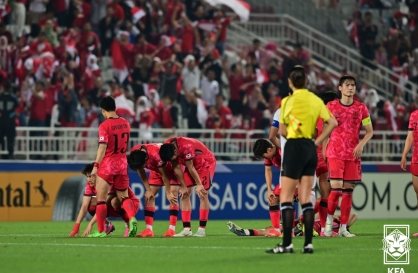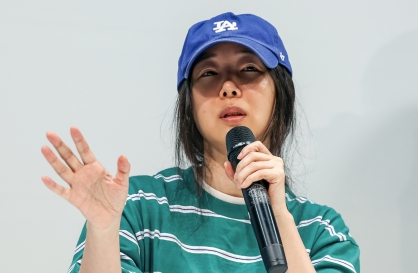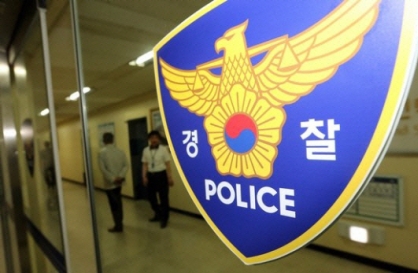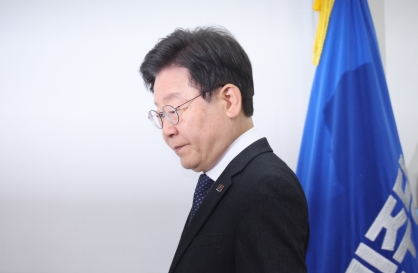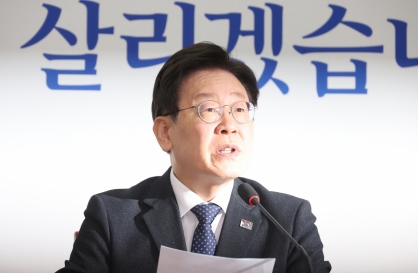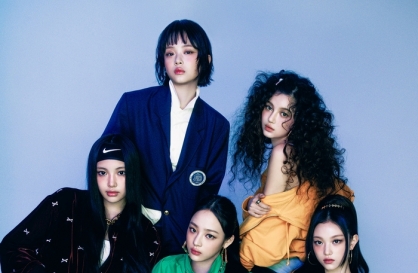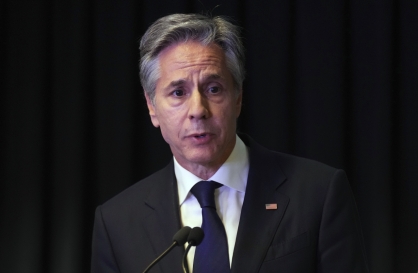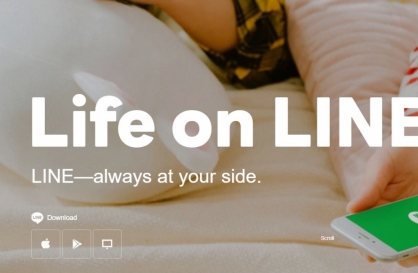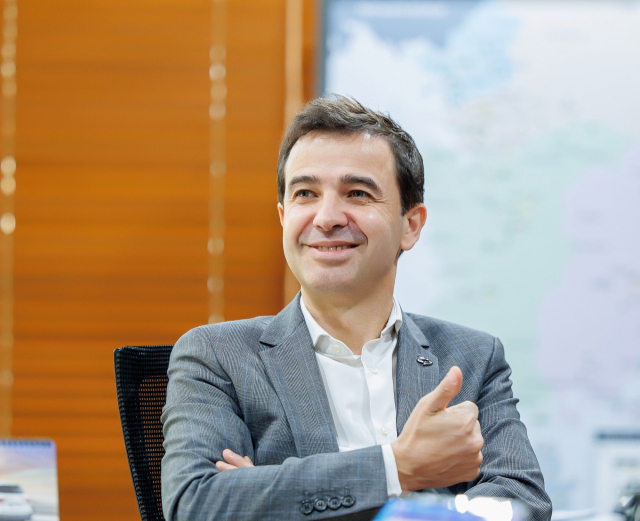 |
르노코리아자동차 스테판 드블레즈 사장이 5일 강남구 회사 본사에서 코리아헤럴드와 인터뷰를 하고 있다. (르노코리아자동차) |
[코리아헤럴드=간형우, 변혜진 기자] 르노코리아자동차가 내년 본격적인 리브랜딩에 나선다. 4년 간의 공백을 깨고 새로 출시할 중형 하이브리드 SUV(스포츠유틸리티 차량)를 시작으로 ‘구식’ 브랜드 이미지를 탈피하고 한국과 글로벌 시장을 공략한다는 구상이다.
르노코리아자동차 스테판 드블레즈 사장은 최근 코리아헤럴드와의 인터뷰에서 “내년 가장 중요한 두 가지 사업은 브랜드 이미지 제고와 2분기 오로라1(가칭) 차량 출시”라며 “지난 22년 간 우리는 (한국 시장에서도) 유럽 중심적인 차량을 선보였기 때문에 프랑스 자동차제조사의 정체성과 한국 소비자의 요구를 조화롭게 융합하는 데 실패했다”고 말했다.
이어 그는 “르노삼성자동차 시절 삼성의 헤리티지 덕분에 SM5, QM6, QM3 등 르노 자동차의 브랜드 이미지가 좋았다”면서도 “하지만 시간이 흐르면서 르노는 구식이라는 인식이 강해졌고 신선한 프랑스 DNA를 주입하지 못했다”고 설명했다.
르노그룹의 2대 주주인 중국 지리그룹과 개발 중인 오로라1은 르노코리아의 절치부심 끝에 선보이는 첫 번째 차량이다.
드블레즈 사장은 “르노그룹의 브랜드 디자인 총괄인 길레스 비달이 신차 디자인을 맡았다”며 “소형 차량을 선호하는 유럽 시장과는 달리 더 큰 차를 선호하는 한국 소비자의 선호도를 반영해 과거 르노 차량보다 레그룸 등 내부 공간이 더 커졌다”고 밝혔다.
단순히 크기만 커지는 것은 아니다. 드블레즈 사장은 얼마전 오로라1 시제품 차량 운전 후 엔지니어들에게 “더 재미있는 운전 경험”을 제공할 수 있도록 주문했다는 후문이다. 르노의 트윙고와 르노5와 같은 경차, 에스파스 밴 등 특색 있는 차량 개발 경험을 바탕으로 인포테인먼트 시스템부터 내외장 디자인까지 차별화한다는 계획이다.
그는 하이브리드 차를 신차 모델로 선택한 배경과 관련해 “자동차 시장은 소비자 선호와 정부 규제 두 가지로 결정되는데 한국 정부는 전기차를 의무화하고 있지 않기 때문에 하이브리드 차량 판매 장애물이 없다”며 “더군다나 한국처럼 큰 차를 선호하면 전기차에도 대용량 배터리가 탑재되고 가격이 비싸져 큰 이점이 없다”고 말했다.
이어 그는 “2030년까지 자동차 시장의 30%를 전기차가 차지한다는 것이 공통된 전망”이라며, “전기차 배터리 기술이 주행거리, 가격 측면에서 비약적으로 향상되기 전까지는 나머지 70% 시장을 친환경 하이브리드 차량으로 공략하는 것이 유효한 전략”이라고 말했다.
하지만 전기차에 손을 놓고 있는 것은 아니다. 르노코리아는 2026년 전기차 출시를 계획하고 있으며 지난 달 스웨덴 브랜드 폴스타의 전기 SUV 폴스타4를 위탁생산하기로 협약을 맺기도 했다. 르노코리아와 폴스타는 중국 최대 민영 자동차제조사인 지리그룹을 각각 2대주주, 최대주주로 두고 있다.
드블레즈 사장은 폴스타와의 빅딜에 대해 “르노그룹의 지원을 받지 않고 르노코리아와 폴스타 간 협의해서 성사된 계약”이라며 “폴스타4 생산은 양사 간 추가적인 시너지 창출 뿐 아니라 자사의 미래 전기차 생산에도 도움이 되는 중요한 첫 걸음”이라고 강조했다.
폴스타4에는 폴스타의 프리미엄 전기차 전용 SEA 플랫폼이 탑재되며 2025년 하반기부터 르노코리아의 부산공장에서 생산된 물량은 미국, 캐나다 등에도 수출될 예정이다.
그는 “볼보, 지커, 지오메트리, 로터스, 링크 등 중국 외 지역에 생산기지가 없는 지리그룹의 다른 자동차 브랜드들과의 협업 기회도 긍정적으로 검토할 수 있을 것”이라고 덧붙였다.
한국은 드블레즈 사장이 가장 어렵다고 손꼽은 시장이다. 그는 “하나의 자동차 브랜드가 80% 이상의 점유율을 갖고 있는 나라가 거의 없다”면서도 “한국 자동차기업과는 차별화된 브랜드 포지셔닝과 스토리텔링을 한국 소비자들에게 제공할 수 있다면 150만대 연 자동차 판매량 중 100,000대는 르노가 판매할 수 있을 것” 이라고 강조했다.
드블레즈 사장은 지난해 3월 부임했다. 2008년 남미시장 차량 개발 총괄 엔지니어를 거쳐 2014년에는 둥펑-르노 제품 · 브랜드 기획 및 프로그램 부사장직을 역임했다. 2017년부터 C(준중형)/D(중형) 세그먼트 신차 개발 프로그램 총괄직을 지냈고 2021년 르노그룹의 선행 프로젝트 및 크로스 카 라인 프로그램의 총괄 디렉터를 담당하기도 했다.
〈원문 기사〉
[Herald Interview] Renault Korea prepares for major changes from 2024
French automaker maps out brand uplift, launch of new hybrid vehicle Aurora 1
Renault Korea Motors is pinning high hopes for next year to be the beginning of a complete turnaround after years of struggle, as the French automaker has big plans for 2024 and beyond, its CEO says.
“Next year, we will have two big events. One related to the brand uplift and one related to the launch of the Aurora 1,” said Renault Korea Motors CEO Stephane Deblaise in an interview with The Korea Herald at the automaker’s office in Seoul on Dec. 5.
The Aurora 1, codenamed AR1, refers to the automaker’s project for developing and launching a new hybrid vehicle, which runs on an electric motor along with a gasoline engine. The Aurora project is Renault Korea’s roadmap to roll out hybrid vehicles from next year and battery-electric vehicles in 2026.
“With the Aurora project, we really put a French design, which will be done by Gilles Vidal, the head of Renault brand design,” said Deblaise.
“We put all our brand DNA and put together a car, which is much bigger than (it was) in the past. For instance, the knee room, which means the distance between your knee and the front row. In Korea, bigger is better as of today. Our intention is to really put the best of Renault and the needs of the Korean customer together in our new launches in the future.”
The CEO, who took the leading position at Renault Korea in March 2022, explained that the current plan is in two steps. The first phase is the brand uplift and launch of the Aurora projects between 2024 and 2026, and the second is to introduce new Renault Group brands and release more battery electric vehicles in the Korean market between 2027 and 2029.
As for the consensus among major global automakers to move toward all-electric vehicles soon, the CEO pointed out that hybrids will still be a huge part of the auto market even with the EV-shifting efforts in full steam.
"The common forecast of everybody is that 30 percent of the market in 2030 should be BEVs, meaning that 70 percent is more or less hybrid and maybe four by four,” he said.
Asked about specific plans for the brand uplift, Deblaise refrained from disclosing too much information. However, he underlined that now is the time to move forward and shake things up completely.
“Renault Samsung had a good image thanks to Samsung. This is why it was very good to capitalize on this Samsung heritage,” he said.
“We had good cars like the SM5, QM6 and QM3. Some of them were successful, but globally as time passed the company image was decreasing, seen as an old-fashioned brand more and more.”
The CEO pointed out that the recent cooperation announcement with Swedish BEV maker Polestar to produce the Polestar 4 at Renault Korea’s Busan plant from 2025 shows how the Korean office of the French brand can offer a lot more than what other importers can do here.
“Other brands are importing, but we are the only one to have a plant here,” he said.
“We are adding value to this country. For instance, nobody else could produce Polestar. We are creating something that nobody else can do.”
Deblaise also noted that having Zhejiang Geely Holding Group as a shareholder is a very good opportunity, because it’s open to a lot of brands such as Geely, Polestar, Volvo, Zeekr, Geometry, Lotus and Lynk & Co., in which the China-based multinational automotive company owns a majority stake.
“Some of these brands are very, very good. These brands have not so many plants outside of China,” he said.
“(Our cooperation with Polestar) is showing that what we call a horizontal partnership can be very good, meaning you don’t need to have all your competencies all at home to do the job.”
According to the CEO, the Busan plant’s production capacity is likely to stay at the current level of 300,000 units per year, but its portfolio will have more variety, with "several" brands using the site to produce vehicles in the future.
